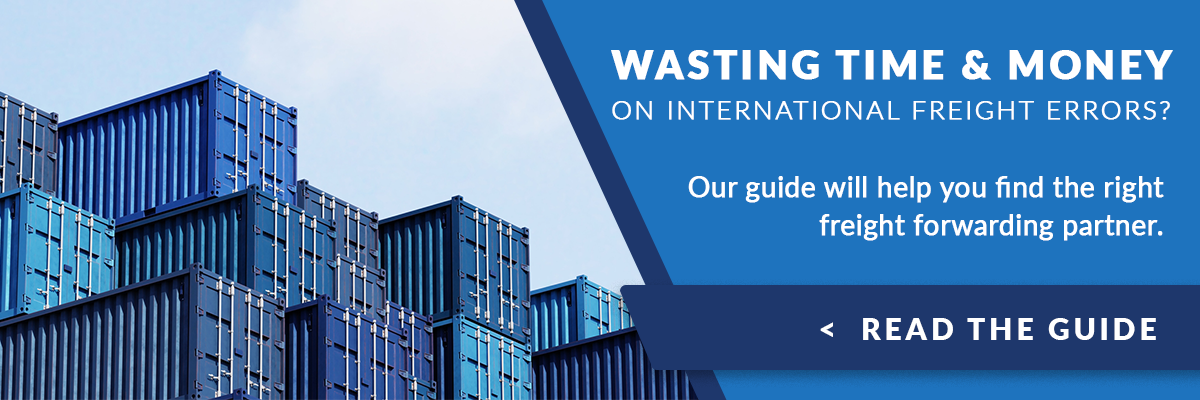
As lockdown procedures are still in effect in many U.S. states and other areas around the world, COVID-19’s impact on global shipping is far from over.
But the news isn’t all bad. China is ramping manufacturing up, almost as if they are back to firing on all cylinders. Factory workers, office workers, logistics providers are all transitioning back to full capacity.
Southeast Asia is still weathering the coronavirus storm, but they are slowly returning to normal as well. Plants, seaports, and airports are now staffed at around 30 percent or more, which is a positive sign. The same goes for India, which was hit hardest by the lock-down measure.
In many ways, SE Asia and India are similar to what’s happening in the United States and Europe at the moment. Slowly, things are starting to get back to normal. Some businesses are opening back up, and people are excited to get back to work.
However, just because manufacturing plants and offices are ready to start exporting and importing goods again, demand may still be an issue for some products.
Consumer Demand Still a Factor for Global Shipping
An excellent example is that we would typically see a lot of ‘back to school’ goods imported into the U.S. around this time of year, like backpacks, thermoses, and lunch-boxes. But with the uncertainty about when schools will actually reopen, consumer demand for these products is still up in the air. Even imports like clothes are affected, as there may be less shopping for back-to-school clothing, so the demand is uncertain.
Despite the uncertainty, consumer demand for perishable school items is as high as ever. Whether a student is going to a brick-and-mortar school or attending classes online, they still need pens and pencils, rulers, protractors, and notebooks.
U.S. Manufacturers Are Starting to Reopen.
News is coming out that U.S. manufacturers are starting to reopen, namely automobile plants.
Supply for auto parts should increase over the next few weeks, and we may see some companies hedging the market with U.S. manufacturers restarting their operations. We expect some businesses will pre-order goods with the expectation that doors will be fully open soon, and they might beat the competition to market.
It’s a bit risky, but importers that can take this step may come out on top, especially since air cargo prices are through the roof.
Air Freight Rates Are Sky-High.
We typically see air cargo at around two dollars per kilo, but at the moment, airlines are charging approximately sixteen dollars. That’s an 800 percent price increase.
These are historically high prices. Somewhere in the neighborhood of 40 percent of air cargo is usually carried in passenger planes, but a significant portion of passenger flights have been canceled. Even if flights get back on track soon, there will still be a back-log of air cargo and we could see high air freight rates for some time.
If air cargo rates stay at these historic rates for a while and importers suddenly realize they need to rush portions of their shipments via air cargo, it could severely impact their bottom line. Those who were successful at hedging the market ahead of time with ocean freight will be better off.
Airlines could control a carrier market for a while, but that may not be the case for steamship lines. They have added handfuls of blank sailings, especially to the West Coast, but they still aren’t commanding the rates they would like. So, the chances are slim that we’ll see a ‘peak season’ this year where ocean freight rates increase significantly.
Again, this all comes back to consumer demand, and for ocean freight, it’s looking like it will be a shipper’s market as we head towards fall.
Emerging Markets
If there is one good thing that comes out of this pandemic for international importers, it’s emerging markets.
Importers are going to diversify their supply chains. Instead of being solely locked into production in China, we’ll probably start seeing a lot more ‘Plan B, C, and D’ supply chains set up in places like Malaysia, India, Thailand, Vietnam, Indonesia, and even Africa.
The traditional business model has always been 1 + 1, meaning one factory in China and one elsewhere as a backup. Now we’re more likely to see a 1 + 3 or 4 approach, giving importers three or four options to keep their shipments moving in case of future issues like COVID.
Certain countries will likely take note of this and invest heavily in their supply chain infrastructure to garner more of the global trade market. This isn’t necessarily good for China, but it’s excellent for importers and global trade in general. Vietnam has been developing a lot over the last few years, and so Southeast Asia, India, and Africa are developing markets that could take a decent slice of the pie from China over the next few years.
The bottom line is specific industries are going to be more affected than others because of changing consumer demand. Navigating new relationships with carriers could also be tricky because of the uncertainties with cargo volume and minimum quantity commitments. Global shipping is somewhat of a moving calculus right now, so speaking with an experienced global logistics provider is the best move to help you negotiate and stay ahead of the curve.
















